Numerical and Experimental Study on a High-Power Cold Achieving Process of a Coil-Plate Ice-Storage System
Abstract
:1. Introduction
2. Materials and Methods
2.1. Experiment Apparatus
2.2. Simulation Model
3. Results and Discussion
3.1. Model Verification
3.2. Effects of Unit Structural Parameters
3.3. Effects of Coolant Temperature and Volume Flow Rate
4. Conclusions
Author Contributions
Funding
Conflicts of Interest
References
- Wallace, J. Keep your laser-diode system cool, whatever the power. Laser Focus World 2018, 54, 75–77. [Google Scholar]
- Guan, C.; Li, L.; Ji, H.M.; Luo, S.; Xu, P.; Gao, Q.; Lv, H.; Liu, W. Fabrication and Characterization of a High-Power Assembly With a 20-Junction Monolithically Stacked Laser Power Converter. IEEE J. Photovolt. 2018, 8, 1355–1362. [Google Scholar] [CrossRef]
- Smyth, C.J.C.; Mirkhanov, S.; Quarterman, A.H.; Wilcox, K.G. Thermal management of VECSELs by front surface direct liquid cooling. In Vertical External Cavity Surface Emitting Lasers; Wilcox, K.G., Ed.; SPIE-INT SOC OPTICAL ENGINEERING: Bellingham, WA, USA, 2016. [Google Scholar]
- Cheng, X.; Shang, J. Thermal behavior of micro-channel cooled thin-slab Fe:ZnSe lasers. Optik 2017, 143, 66–70. [Google Scholar] [CrossRef]
- Beni, S.B.; Bahrami, A.; Salimpour, M.R. Design of novel geometries for microchannel heat sinks used for cooling diode lasers. Int. J. Heat Mass Transf. 2017, 112, 689–698. [Google Scholar] [CrossRef]
- Seo, M.J.; Lee, J.H.; Park, S.R.; Park, S.Y.; Kim, S.M. Effects of the Various Cooling Conditions on 1,064-nm nd:Yag Laser Treatment for Selective Photothermolysis. Exp. Heat Transf. 2014, 27, 488–500. [Google Scholar] [CrossRef]
- Shu, S.; Hou, G.; Wang, L.; Tian, S.; Vassiliev, L.L.; Tong, C. Heat dissipation in high-power semiconductor lasers with heat pipe cooling system. J. Mech. Sci. Technol. 2017, 31, 2607–2612. [Google Scholar] [CrossRef]
- Novak, V.; Podobnik, B.; Možina, J. Analysis of the thermal management system for a pump laser. Appl. Therm. Eng. 2013, 57, 99–106. [Google Scholar] [CrossRef]
- Hasnain, S.M. Review on sustainable thermal energy storage technologies, Part II: Cool thermal storage. Energy Convers. Manag. 1998, 39, 1139–1153. [Google Scholar] [CrossRef]
- Wang, C.; He, Z.; Li, H.; Wennerstern, R.; Sun, Q. Evaluation on performance of a phase change material based cold storage house. In Proceedings of the 8th International Conference on Applied Energy, Beijing, China, 8–11 October 2016; Yan, J., Sun, F.C., Desideri, U., Li, H., Campana, P., Xiong, R., Eds.; ELSEVIER SCIENCE BV: Amsterdam, The Netherlands, 2017. [Google Scholar]
- Oró, E.; De Gracia, A.; Castell, A.; Farid, M.M.; Cabeza, L.F. Review on phase change materials (PCMs) for cold thermal energy storage applications. Appl. Energy 2012, 99, 513–533. [Google Scholar] [CrossRef]
- Maiorino, A.; Del Duca, M.G.; Mota-Babiloni, A.; Greco, A.; Aprea, C. The thermal performances of a refrigerator incorporating a Phase Change Material. Int. J. Refrig. 2019, 100, 255–264. [Google Scholar] [CrossRef]
- ASHRAE. Physical Properties of Secondary Coolants (Brines). In ASHRAE Handbook: Fundamentals; American Society of Heating, Air-Conditioning and Refrigeration Engineers: Atlanta, GA, USA, 2017. [Google Scholar]
- Zhou, F.; Ji, J.; Cai, J.; Yu, B. Experimental and numerical study of the freezing process of flat-plate solar collector. Appl. Therm. Eng. 2017, 118, 773–784. [Google Scholar] [CrossRef]
- Duffie, J.A.; Beckman, W.A. Solar Engineering of Thermal Processes, 4th ed.; John Wiley & Sons: New York, NY, USA, 2013. [Google Scholar]
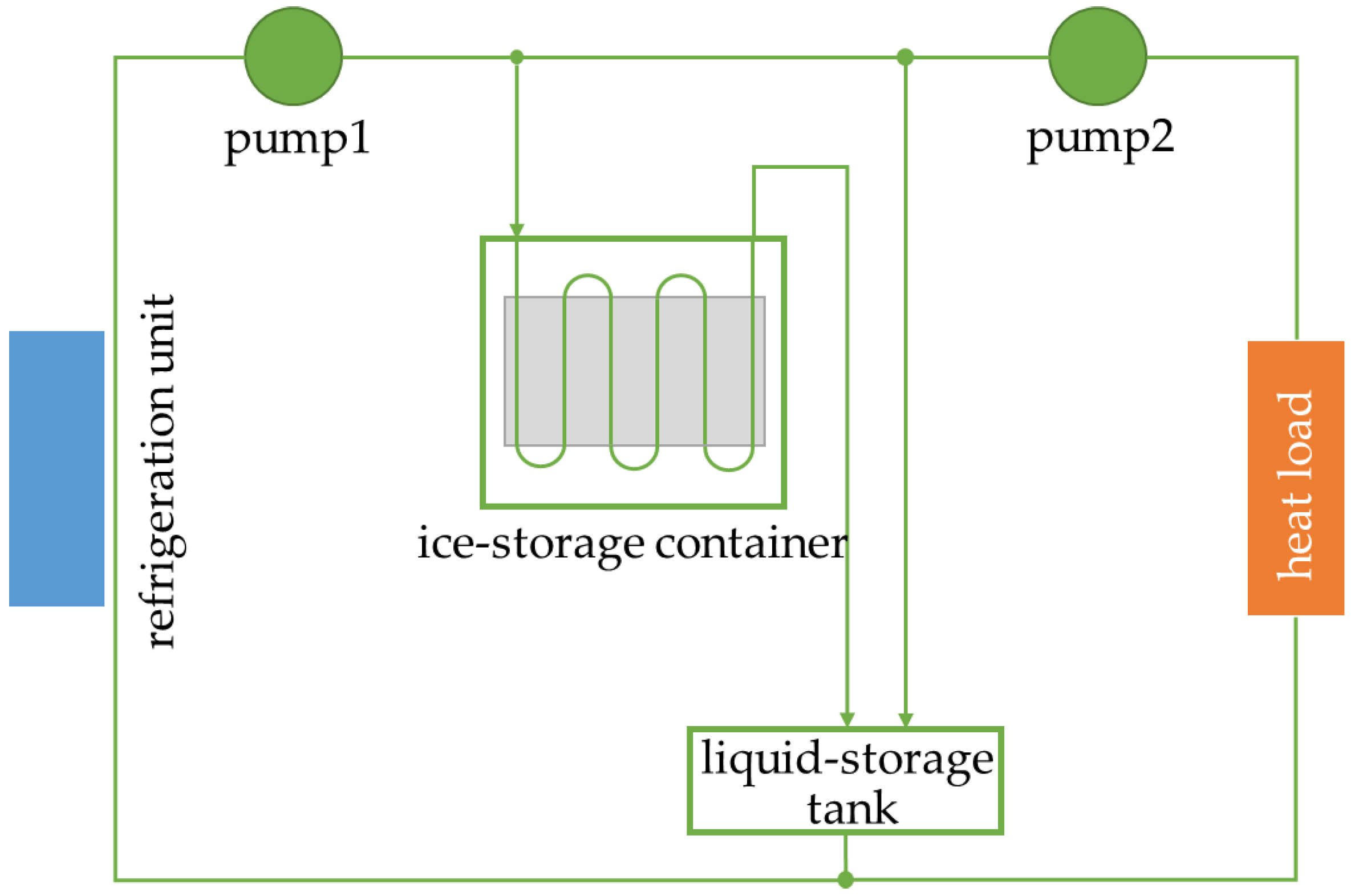
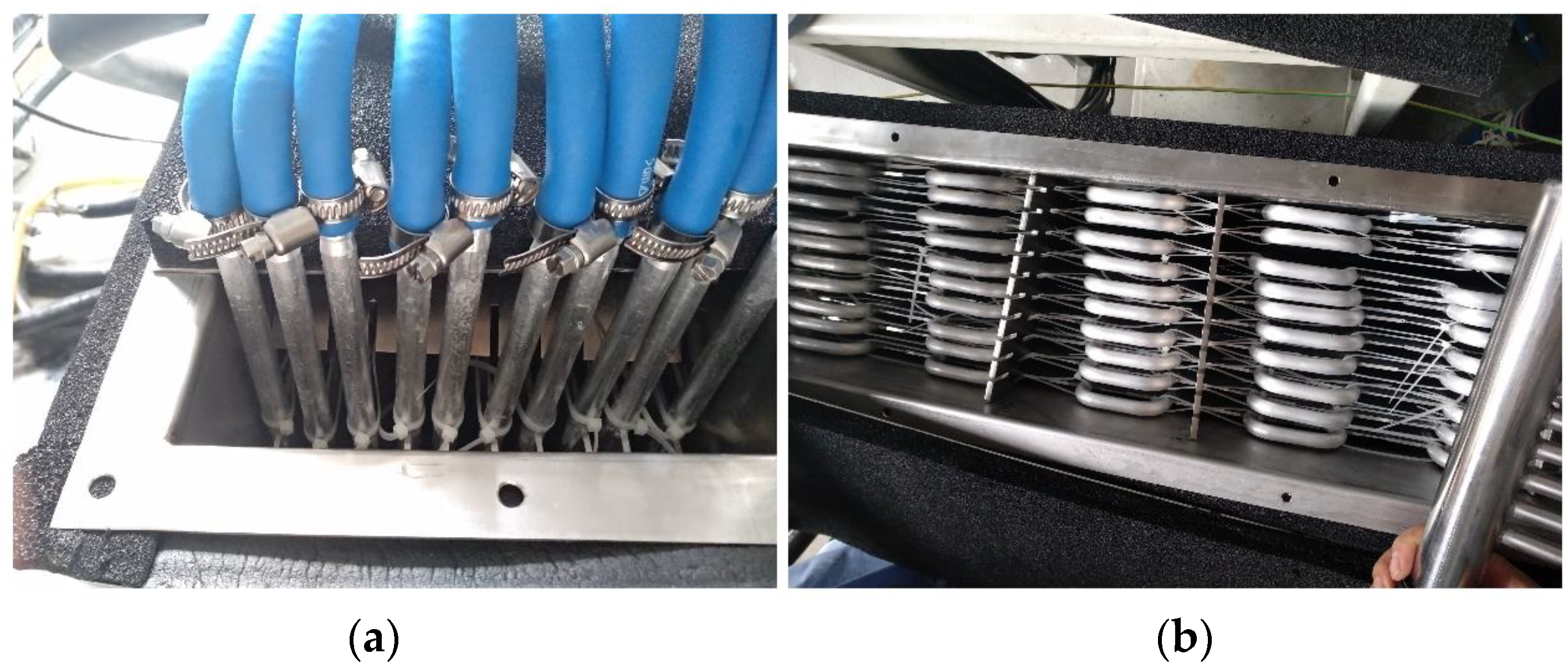
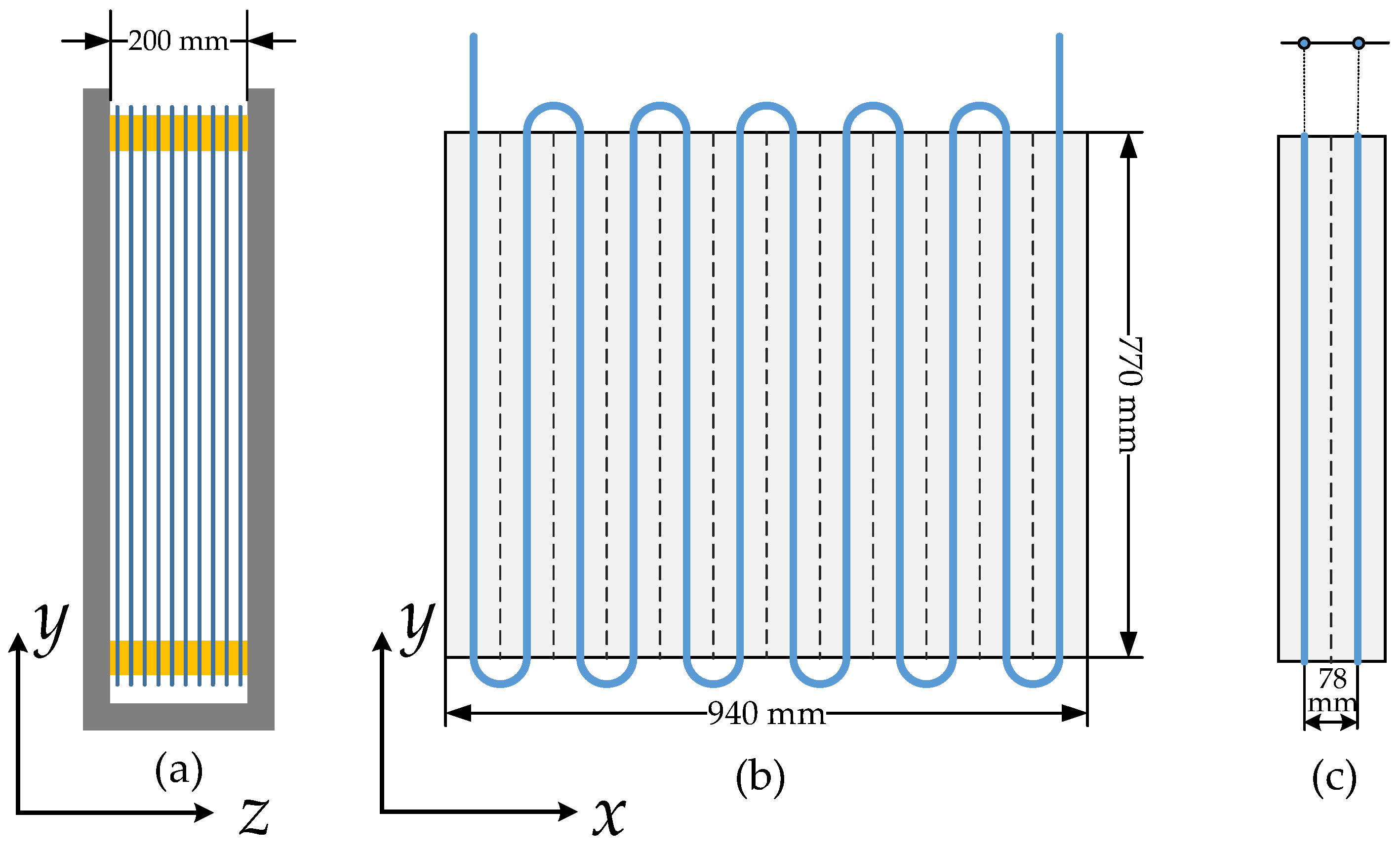
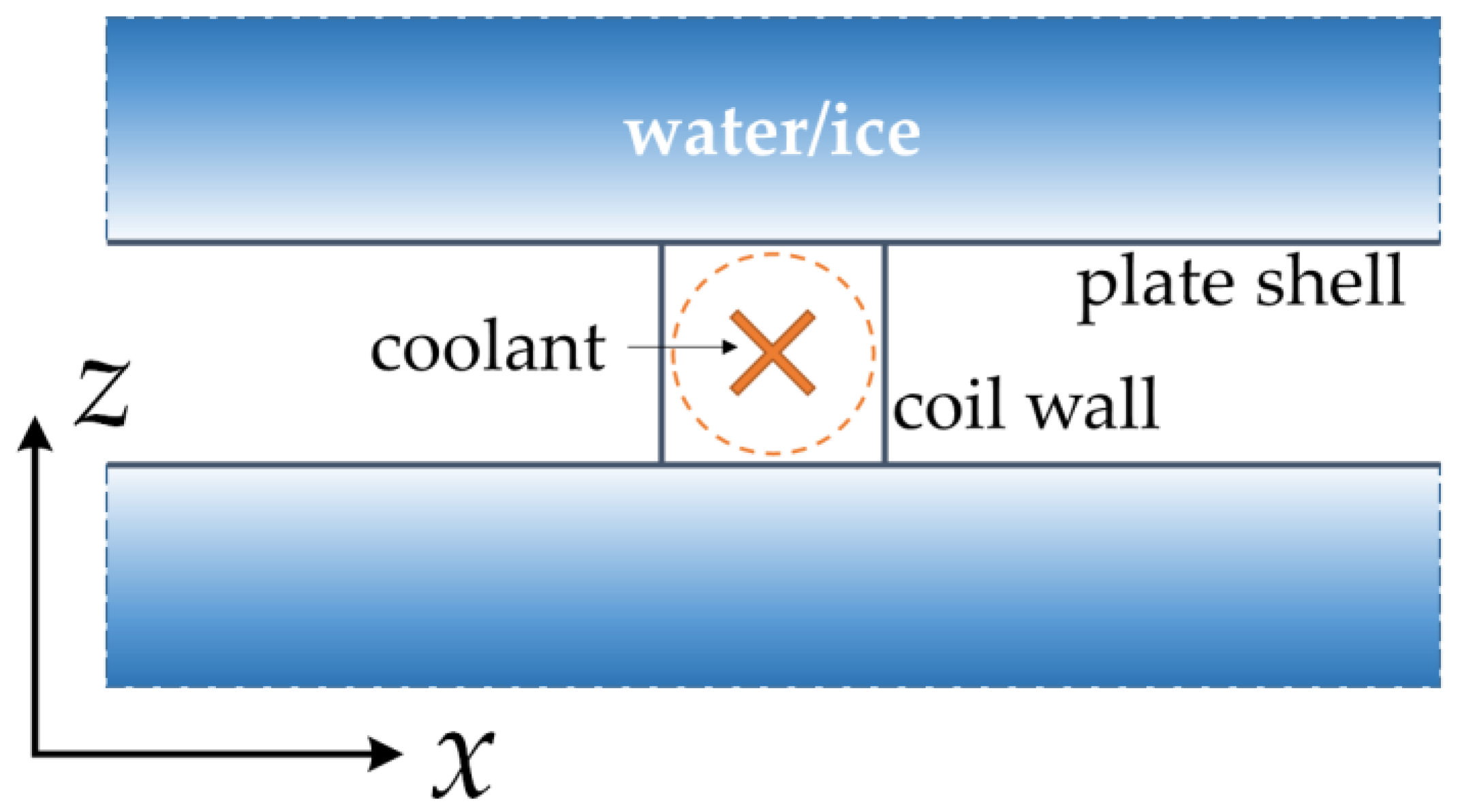
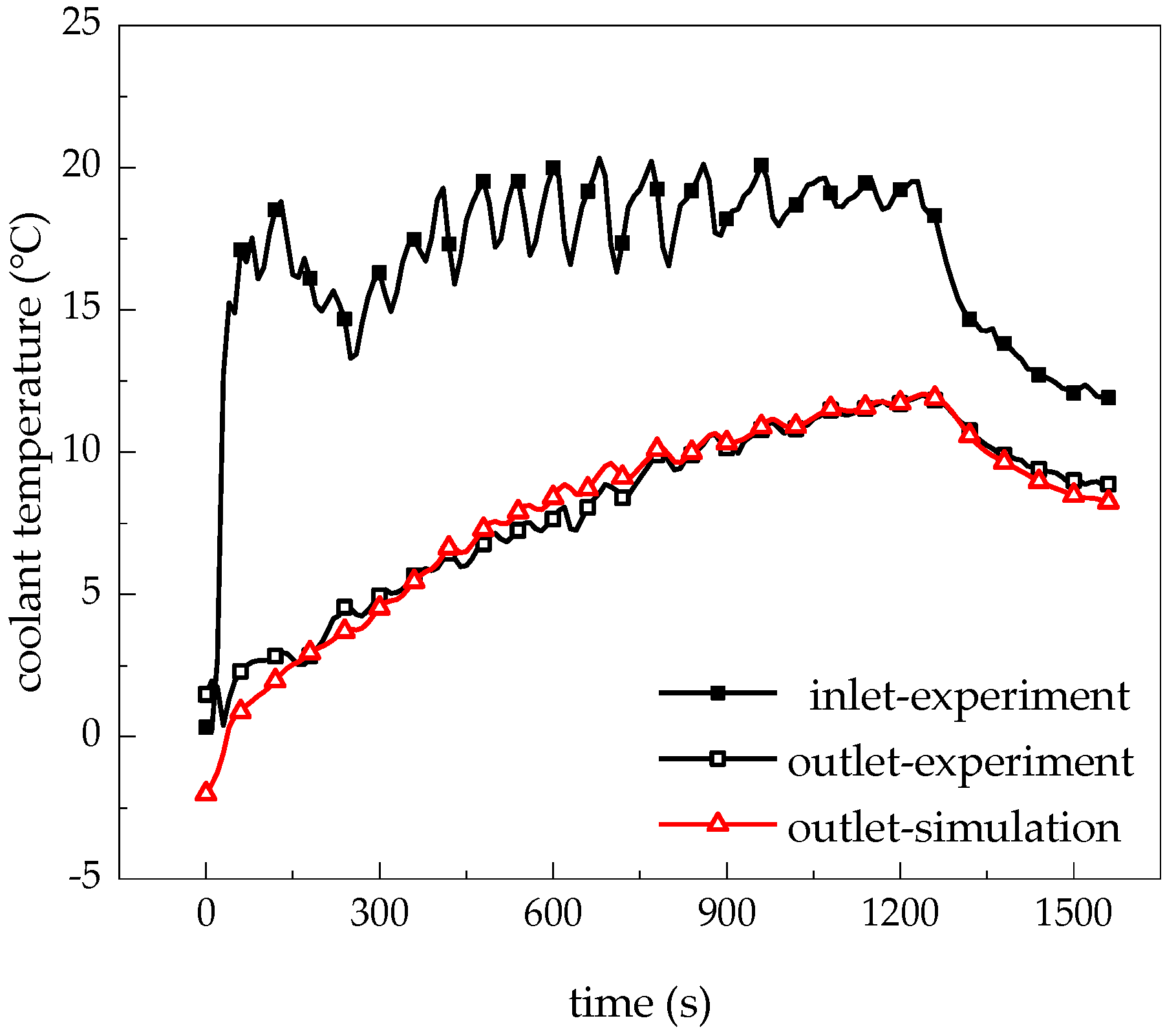
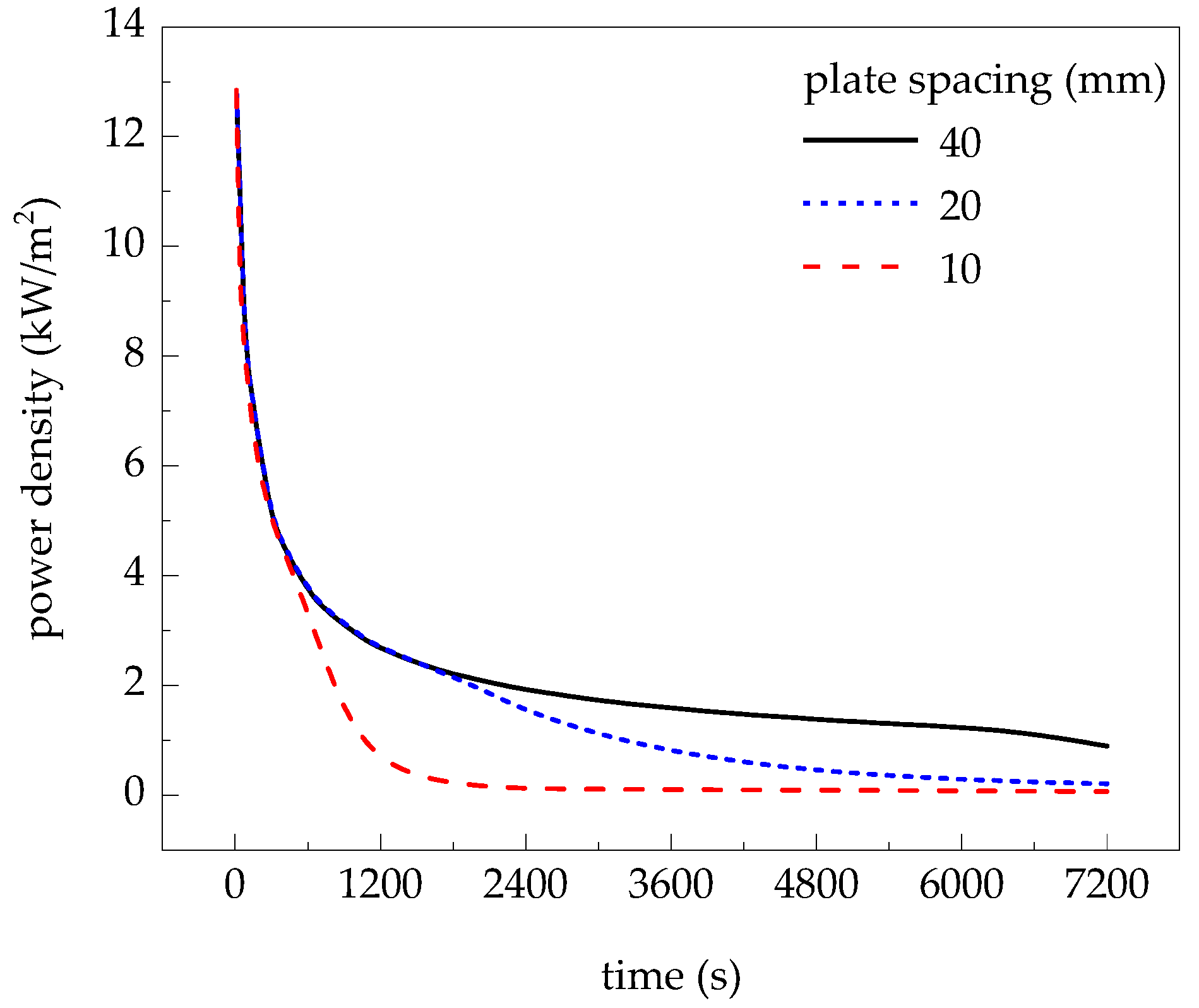
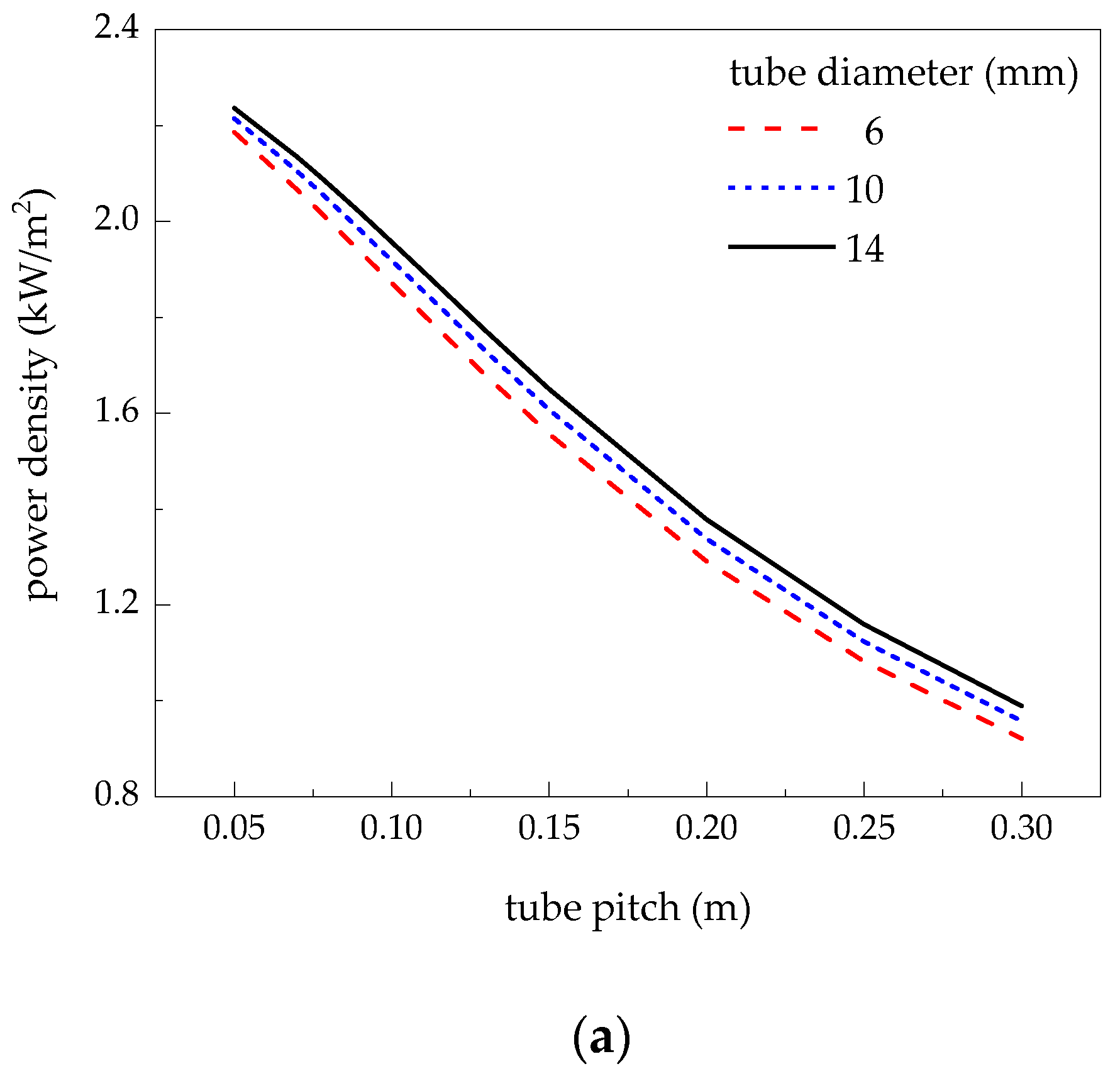

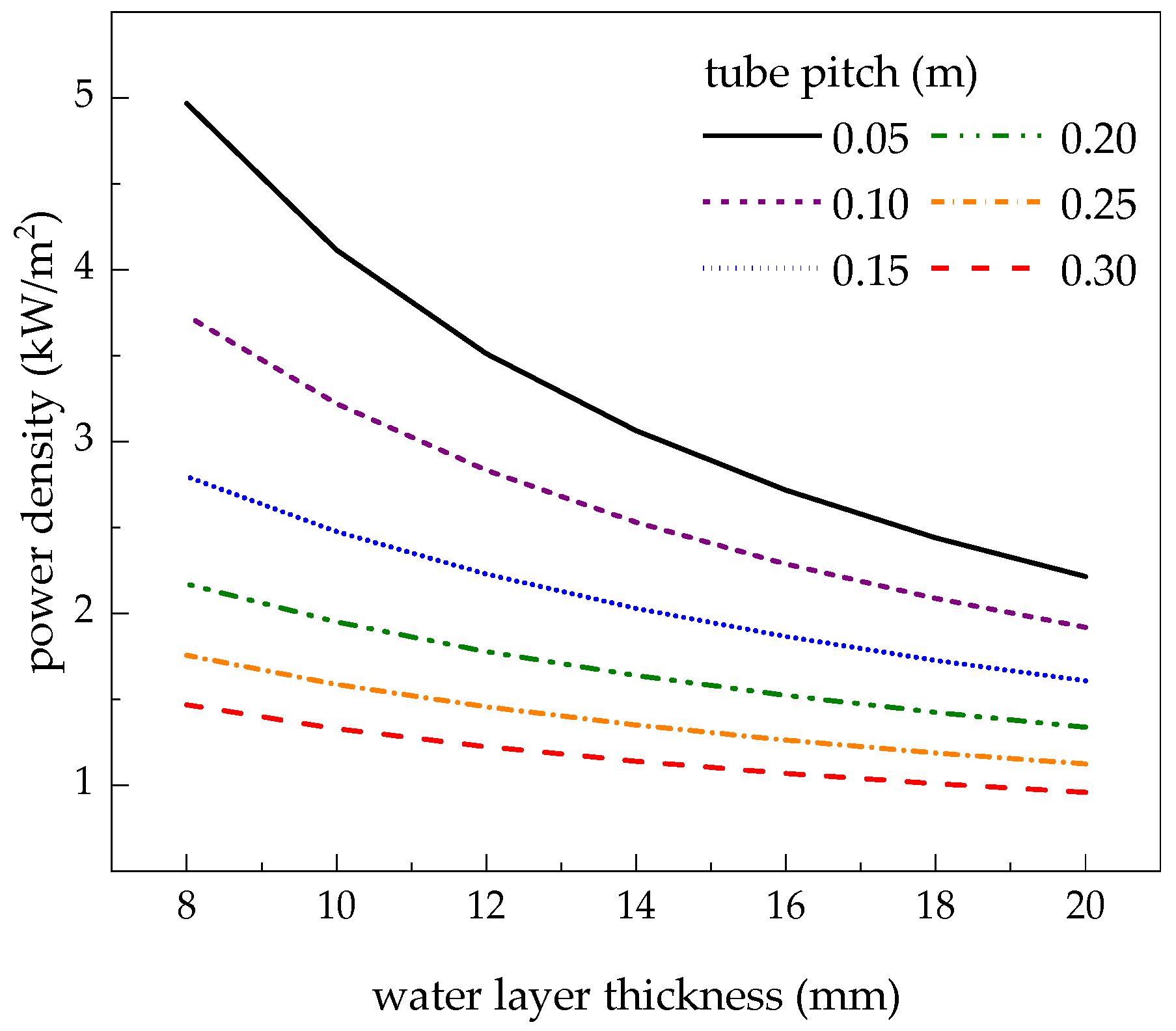
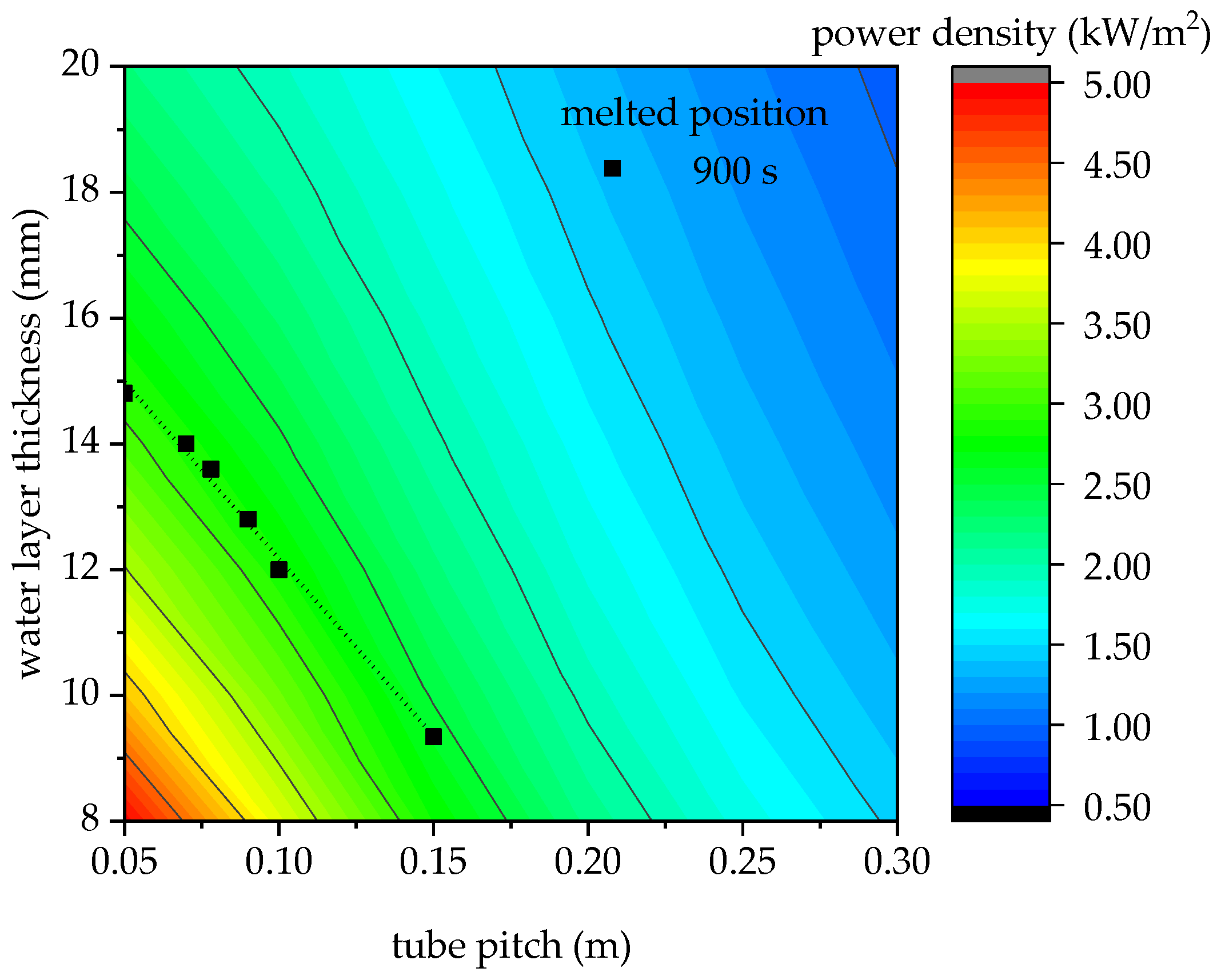

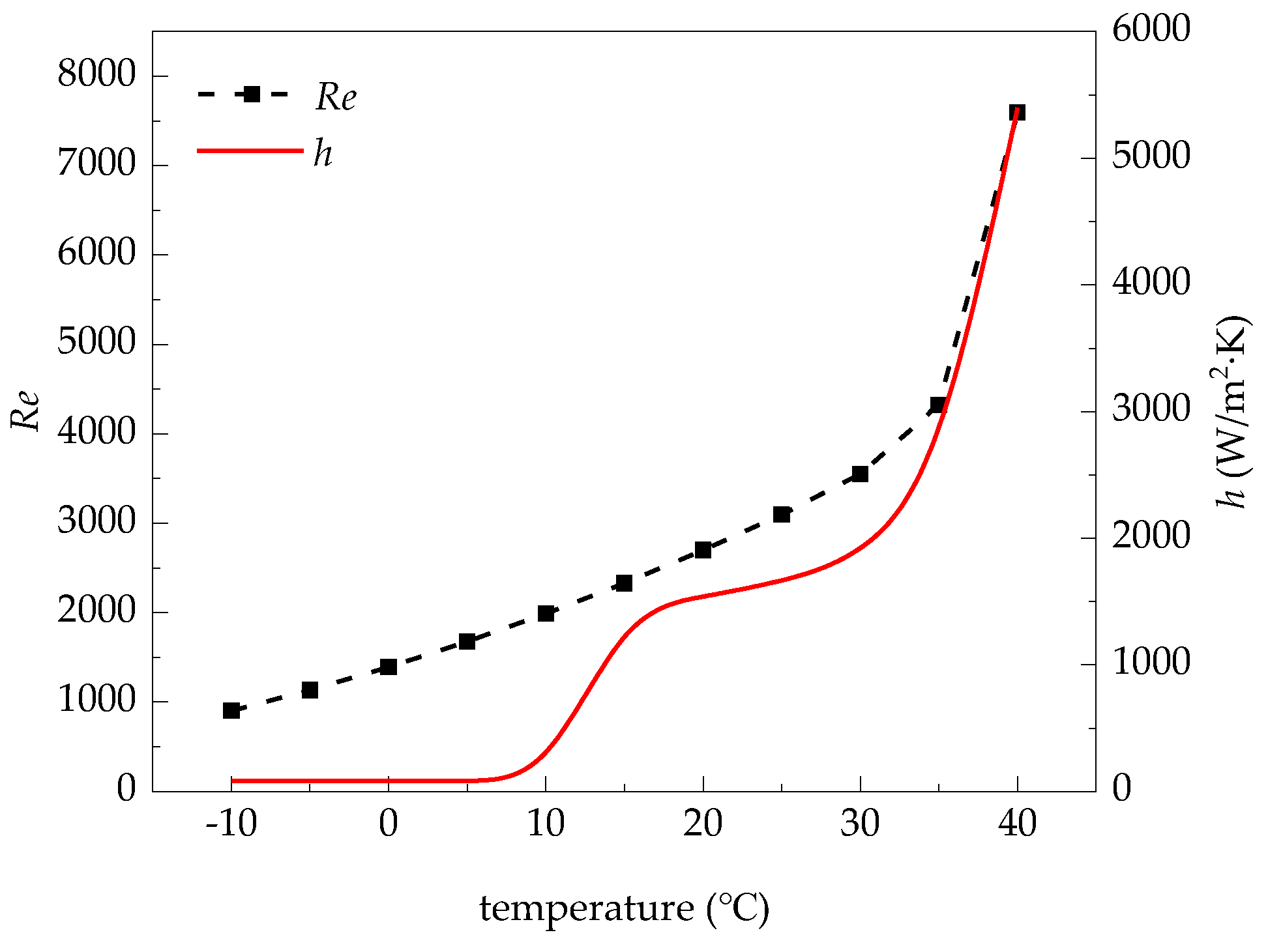
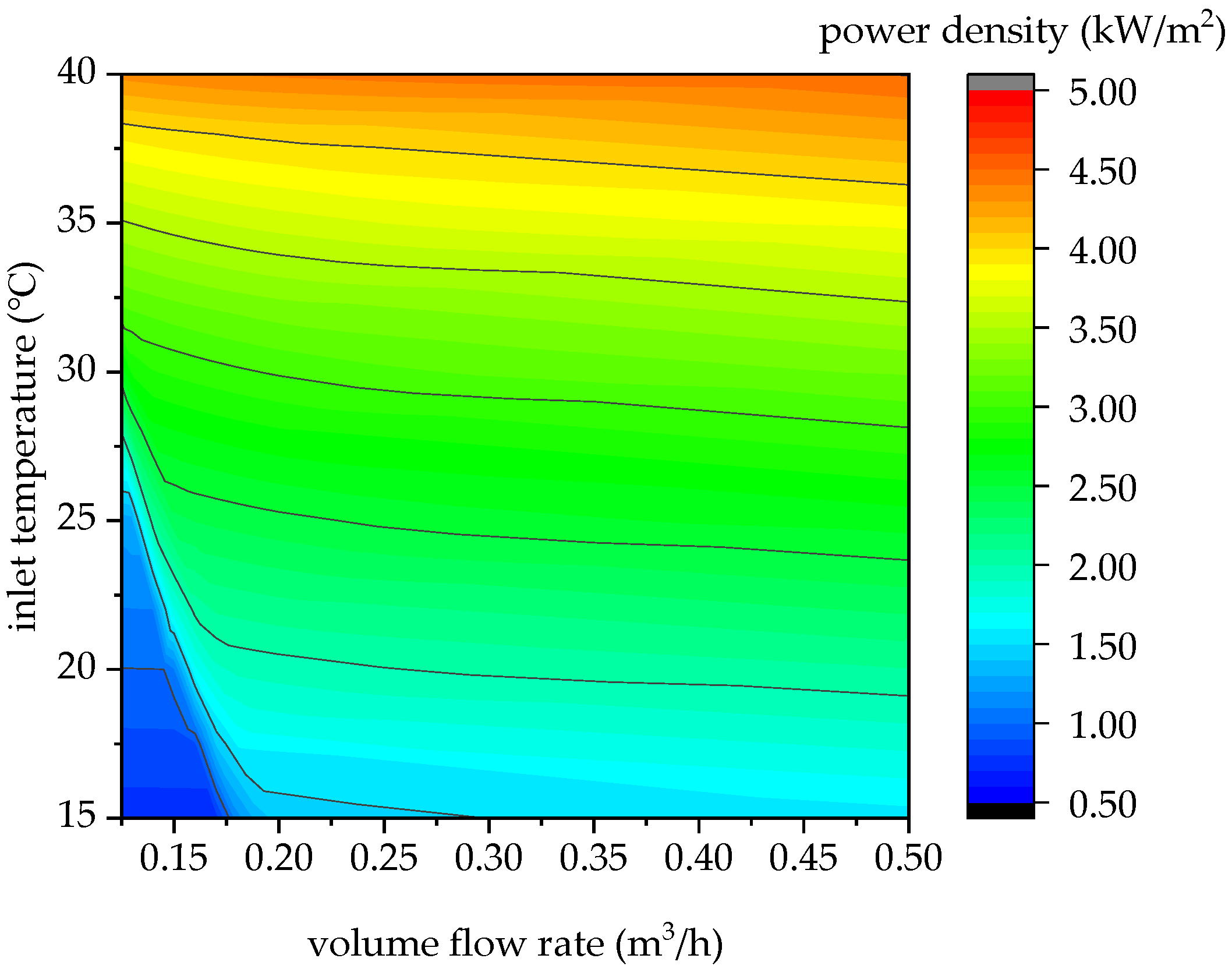
| Temperature °C | Density kg/m3 | Thermal Conductivity W/(m·K) | Specific Heat Capacity J/(kg·K) | Dynamic Viscosity kg·m/s |
|---|---|---|---|---|
| −10 | 1054.31 | 0.411 | 3560 | 0.0062 |
| 0 | 1051.78 | 0.423 | 3589 | 0.0042 |
| 10 | 1048.76 | 0.435 | 3617 | 0.0030 |
| 20 | 1045.25 | 0.445 | 3645 | 0.0022 |
| 30 | 1041.26 | 0.455 | 3674 | 0.0017 |
| 40 | 1036.78 | 0.463 | 3702 | 0.0013 |
| Phase | Temperature °C | Density kg/m3 | Thermal Conductivity W/(m·K) | Specific Heat Capacity J/(kg·K) |
|---|---|---|---|---|
| ice | −10 | 920 | 1.88 | 2040 |
| −0.5 | 1.88 | 2040 | ||
| 0 | / | 668,000 | ||
| water | 0.5 | 0.569 | 4217 | |
| 50 | 0.645 | 4182 |
© 2019 by the authors. Licensee MDPI, Basel, Switzerland. This article is an open access article distributed under the terms and conditions of the Creative Commons Attribution (CC BY) license (http://creativecommons.org/licenses/by/4.0/).
Share and Cite
Guo, L.; Ye, H. Numerical and Experimental Study on a High-Power Cold Achieving Process of a Coil-Plate Ice-Storage System. Energies 2019, 12, 4085. https://doi.org/10.3390/en12214085
Guo L, Ye H. Numerical and Experimental Study on a High-Power Cold Achieving Process of a Coil-Plate Ice-Storage System. Energies. 2019; 12(21):4085. https://doi.org/10.3390/en12214085
Chicago/Turabian StyleGuo, Liang, and Hong Ye. 2019. "Numerical and Experimental Study on a High-Power Cold Achieving Process of a Coil-Plate Ice-Storage System" Energies 12, no. 21: 4085. https://doi.org/10.3390/en12214085
APA StyleGuo, L., & Ye, H. (2019). Numerical and Experimental Study on a High-Power Cold Achieving Process of a Coil-Plate Ice-Storage System. Energies, 12(21), 4085. https://doi.org/10.3390/en12214085





